This site is supported by our readers. We may earn a commission, at no cost to you, if you purchase through links.
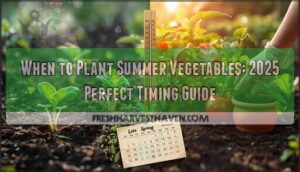
This typically falls between late April and early June, depending on your location. Cool-season crops like lettuce can go in earlier, but warm-season favorites like tomatoes, peppers, and squash need that soil warmth to thrive.
Check your local frost dates and soil temperature – it’s your best guide for timing. Don’t rush it; cold soil stunts growth and wastes your efforts.
The key is patience and watching both calendar and thermometer. Smart timing makes all the difference between a struggling garden and a bountiful harvest that’ll keep your kitchen stocked all season long.
Table Of Contents
- Key Takeaways
- Summer Vegetable Planting
- When to Plant Summer Vegetables
- Choosing Summer Vegetables
- Planting Schedules and Tips
- Maximizing Summer Harvest
- Frequently Asked Questions (FAQs)
- When should you plant vegetables?
- When should you plant cool season vegetables?
- What vegetables can be grown in the summer?
- When should you plant vegetables for a fall harvest?
- When should you plant vegetables in winter?
- When is the best time to plant vegetable seeds?
- When should I plant my summer veggies?
- What month is best for planting vegetables?
- When to start planting vegetables for spring?
- Is it too late to plant vegetables in August?
- Conclusion
Key Takeaways
- Wait until soil temperatures consistently reach 60-65°F before planting warm-season vegetables like tomatoes, peppers, and squash – cold soil will stunt growth and waste your efforts.
- Plant cool-season crops like lettuce and spinach earlier when soil hits 40°F, but wait until after your last frost date for heat-loving summer vegetables.
- Use a soil thermometer to check temperatures at 2-inch depth for three consecutive mornings – this tells you when it’s truly safe to plant, not just calendar dates.
- Plan your planting window between late April and early June depending on your location, and don’t rush it – patience with proper timing makes the difference between a struggling garden and a bountiful harvest.
Summer Vegetable Planting
Timing your summer vegetable planting correctly means the difference between a thriving garden and disappointing harvests.
You’ll need to understand the distinction between cool-season and warm-season crops, plus when your soil reaches the right temperature for each type.
Cool Season Vs Warm Season
Understanding cool-season versus warm-season crops is essential for successful summer vegetable planting.
Cool-season vegetables thrive in 40-75°F temperatures, tolerate frost, and include lettuce, spinach, and peas.
They’re planted before your last frost date and complete their growth cycle before extreme heat hits.
Warm-season crops like tomatoes, peppers, and beans need 65-95°F temperatures and soil above 60°F.
They’re frost-sensitive and require planting after frost dates pass.
Here’s what separates these climate types:
- Cool-season crops bolt when temperatures exceed 80°F
- Warm-season vegetables suffer damage below 50°F
- Garden zones determine your planting calendar timing
- Crop rotation between seasons prevents soil depletion
- Proper soil prep matches each season’s requirements
Understanding the distinction between these two types is crucial for successful summer vegetable planting and maintaining a healthy garden through crop rotation and proper soil preparation.
Regional Planting Calendars
Understanding your Climate Zones and Frost Dates makes all the difference in successful summer vegetable planting. Your gardening calendar should reflect your specific zone’s planting schedule rather than generic timing.
Here’s how regional differences affect your harvest timing:
| Zone | Last Frost Date | Summer Planting Window |
|---|---|---|
| 5-6 | April 15-May 1 | Late May-June |
| 7-8 | March 15-April 15 | April-May |
| 9-10 | February 1-March 1 | March-April |
Gardening Maps from your state’s Extension Service provide precise last frost date data for your area. These resources help you choose the right Seed Selection timing, accounting for microclimates that can shift dates by weeks.
Your gardening zones determine whether you’ll get one or two growing seasons.
Soil Temperature Requirements
Knowing your regional planting calendar helps, but soil temperature determines whether your seeds will actually sprout. Your soil thermometers become your best gardening tool—they tell you when it’s truly time to plant.
Most summer vegetables need warm soil between 60-70°F for proper germination rates. Cold soil kills seeds faster than any pest ever could.
Here’s your soil temperature guide:
- Tomatoes and peppers: Need 65-70°F soil for strong starts
- Beans and squash: Require 65-75°F for reliable emergence
- Corn and cucumbers: Demand 70°F+ for vigorous growth
Check temperatures at 2-inch depth for three consecutive mornings. When readings stay consistent with your crop’s needs after your last frost date, you’re ready to plant during peak growing season.
When to Plant Summer Vegetables
Your summer vegetable planting success hinges on timing it right with your local frost dates.
Check your weather forecast and wait until soil temperatures hit 60°F consistently before planting warm season crops like tomatoes and summer squash.
| Planting Phase | Soil Temperature | Action Required |
|---|---|---|
| Pre-Season | Below 50°F | Soil prep and tool prep |
| Shift | 50-59°F | Start hardening off seedlings |
| Go Time | 60°F+ | Plant warm season crops |
Smart gardeners use crop rotation principles and keep their gardening tools ready.
When soil feels warm to touch, it’s time for summer garden ideas to become reality.
Understanding the best summer vegetables is vital for a successful harvest.
Choosing Summer Vegetables
Selecting the right summer vegetables depends on your garden’s sunlight exposure and watering capacity. Consider heat-tolerant varieties that match your space limitations and maintenance schedule for the best harvest success.
Vegetable Growth Requirements
Three key factors determine your summer vegetable planting success.
First, soil pH between 6.0-7.0 creates ideal nutrient uptake for warm season crops. Test your soil before planting seeds—it’s like checking your car’s oil before a road trip.
Second, nutrient management through organic matter boosts yields by 20-30%. Add compost annually to feed hungry crops like corn and tomatoes.
Third, crop rotation prevents soil depletion and disease buildup. Don’t plant the same family in identical spots year after year.
Quality seed selection paired with proper soil temperature monitoring guarantees your summer vegetable planting efforts pay off with abundant harvests. Understanding summer vegetable options is vital for a successful garden.
Sunlight and Water Needs
Sunlight Hours and Crop Hydration form the foundation of thriving warm-season vegetables.
You’ll need 6-8 hours of direct sunlight daily for ideal growth.
Soil Moisture requires consistent attention—water deeply every 2-3 days during hot spells.
Irrigation timing matters: early morning or evening reduces evaporation and improves moisture distribution.
Irrigation Systems like drip lines promote Water Conservation while delivering steady hydration.
Adding compost enhances soil’s water-holding capacity for better results.
Understanding sunlight requirements is vital for selecting the right vegetables for your garden.
Planting Schedules and Tips
Following a month-by-month planting schedule guarantees you’ll get the most from your summer garden without missing critical timing windows.
You’ll learn exactly when to start seeds indoors, when soil temperatures are right for direct sowing, and how to stagger plantings for continuous harvests all season long, which helps in achieving a continuous harvests.
January Planting Guide
January sets the foundation for your summer vegetables success. Start your garden planning by mapping out crop rotation patterns and ordering seeds for heat-loving varieties like tomatoes, peppers, and eggplants.
- Indoor seed starting: Begin tomatoes and peppers 8-10 weeks before your last frost date
- Soil testing: Check pH levels and amend with compost while ground is workable
- Tool preparation: Organize shovels, thermometers, and seed trays for upcoming season
- Cool-season planting: Direct sow kale and lettuce when soil reaches 40°F
- Bare root crops: Plant asparagus and horseradish if ground isn’t frozen
Understanding a vegetable gardening calendar is essential for maximizing harvest potential. This planting schedule gives you a head start on maximizing your harvest potential.
February Planting Guide
After completing your January garden planning, February brings seed starting and tool preparation into action. Begin sowing tomatoes and peppers indoors using heated propagators, giving these heat-lovers a key head start before your last frost date.
Meanwhile, prepare outdoor beds for cool-season crops and gather essential tools like thermometers and seed trays. Effective use of seed starter kits can substantially improve the success rate of indoor seed starting.
| Task | Timing | Notes |
|---|---|---|
| Indoor seed starting | Early February | Tomatoes, peppers in propagators |
| Tool preparation | Mid-February | Clean, sharpen, organize equipment |
| Soil testing | Late February | Test pH, plan amendments |
In warmer zones 7-10, direct sow lettuce and spinach outdoors when soil reaches 40°F. Crop rotation planning becomes essential now—map where last year’s vegetables grew to avoid planting families in the same spots.
Your planting schedule should account for regional variations, so check your specific zone’s recommendations for ideal summer garden ideas.
March Planting Guide
March marks the turning point when your vegetable planting guide shifts from planning to action.
As soil temperatures climb to 40°F, you’ll start cool crops like spinach, kale, and lettuce outdoors. Seed starting becomes your primary focus indoors – tomatoes, peppers, and eggplant need their head start now.
Soil prep takes center stage this month:
- Test pH levels and add organic matter to achieve 6.0-6.8 range
- Organize garden tools: thermometer, spades, seed trays, and growing mix
- Plant peas at month’s end, avoiding muddy conditions
- Monitor frost dates and protect transplants with row covers
Your summer garden ideas begin taking shape as you balance indoor seedlings with outdoor direct sowing.
April Planting Guide
April transforms your garden from planning phase to active growing season. Your soil prep work pays off now as direct seeding becomes the main event.
Early April welcomes cool-weather champions while mid-month sets the stage for summer vegetables.
when to plant tomatoes and peppers
Check your weather forecast before transplanting – those last-minute cold snaps can surprise you. Your garden layout should accommodate both current plantings and upcoming warm-season crops.
This vegetable gardening 101 approach guarantees steady harvests through proper timing and crop rotation practices.
May Planting Guide
When May arrives, your garden hits its sweet spot for warm season crops. The soil temperature consistently stays above 60°F, making this month perfect for direct sowing and transplanting heat-loving vegetables.
Soil preparation becomes critical now—test pH levels and add compost before planting. Your gardening tools should include a soil thermometer to confirm suitable conditions.
This may planting window is your last chance for many summer vegetables. Here’s your essential planting guide for maximum success:
- Plant heat-loving crops like tomatoes, peppers, and eggplant when nighttime temperatures stay above 50°F
- Direct sow beans and corn in warm, well-draining soil for quick germination
- Start zucchini and squash now for abundant harvests throughout summer
- Implement crop rotation by avoiding planting the same family in last year’s spots
Smart seed selection and proper timing guarantee your vegetable gardening tips pay off with bountiful harvests.
Maximizing Summer Harvest
Once you’ve got your summer vegetables planted at the right time, you’ll want to make the most of every square foot and every growing day.
Smart techniques like succession planting and proper irrigation can turn a good garden into a great one that keeps producing fresh vegetables all season long, utilizing methods like proper irrigation.
Succession Planting Benefits
Succession planting keeps your summer vegetables producing all season long.
You’ll plant the same crops every 2-3 weeks instead of seeding everything at once.
This approach prevents gaps in your harvest while maximizing garden space.
Your planting schedule guarantees fresh lettuce for months, not just one overwhelming week.
Smart garden planning with crop rotation and proper seed selection creates steady yields.
Track growth stages and harvest timing to perfect your vegetable gardening rhythm.
By implementing a strategy for succession planting, gardeners can enjoy a continuous harvest.
Drip Irrigation Methods
Your drip irrigation system delivers water directly to plant roots, achieving water conservation of up to 60% compared to overhead watering.
This efficient watering method maintains ideal soil moisture while preventing leaf diseases that plague summer vegetables.
Here are five essential drip systems components for your planting calendar success:
- Pressure regulators maintain 10-30 psi for consistent water flow
- Emitter tubing spaces water outlets 12-18 inches apart along rows
- Filtration units prevent clogging from sediment and mineral buildup
- Automated timers optimize watering schedules during hot weather
- Soil moisture sensors adjust irrigation based on actual ground conditions
Position drip lines close to warm soil around your plants, creating the perfect microclimate for root development.
Understanding Drip Irrigation Systems is vital for maximizing water efficiency and crop yields.
Soil Nutrition and Mulching
While proper watering keeps plants hydrated, soil nutrition and mulching create the foundation for exceptional summer harvests.
Smart soil preparation starts with soil testing to determine pH levels and nutrient deficiencies.
Organic mulch transforms your garden into a self-sustaining ecosystem.
Apply 2-4 inches of compost, straw, or grass clippings around plants for maximum benefits:
- Water retention – Reduces irrigation needs by 25-50% compared to bare soil
- Temperature control – Moderates soil fluctuations by up to 15°F during peak summer heat
- Nutrient cycling – Decomposing mulch feeds beneficial microbes and releases essential nutrients
Understanding soil composition basics is essential for creating a favorable growing environment.
Regular soil amendments and compost tea applications maintain ideal growing conditions throughout the season.
Proper Plant Selection Techniques
Beyond picking disease-resistant varieties, smart seed selection starts with soil testing and plant hardiness zones.
Create garden mapping plans that include crop rotation schedules—this prevents soil depletion while maximizing space.
When planting seeds for summer vegetables, choose compact bush types for small gardens or sprawling varieties if you’ve got room.
Focus on vegetable seed starting with proven performers rather than experimental varieties.
Your when to plant timing depends on matching varieties to your specific growing conditions.
These garden planning tips guarantee every plant thrives in its ideal spot.
Frequently Asked Questions (FAQs)
When should you plant vegetables?
Plant vegetables when soil temperatures reach 60°F and you’re past your area’s last frost date.
Cool-season crops like lettuce tolerate cooler soil, while heat-lovers like tomatoes need warmer conditions above 70°F.
When should you plant cool season vegetables?
Like early birds catching the worm, cool-season vegetables thrive when planted before spring’s warmth arrives.
Start them when soil reaches 40°F, typically 2-4 weeks before your last frost date for ideal growth.
What vegetables can be grown in the summer?
You can grow heat-loving vegetables like tomatoes, peppers, eggplant, squash, cucumbers, zucchini, sweet corn, melons, and beans during summer’s warmth.
When should you plant vegetables for a fall harvest?
Timing your fall garden like a chess master planning moves ahead, you’ll want to start planting 10-12 weeks before your first expected frost date for ideal harvest timing.
When should you plant vegetables in winter?
Winter vegetable planting happens in fall for cold-hardy crops like kale, Brussels sprouts, and winter lettuce. You’ll start seeds in late summer, then transplant seedlings before your first frost date.
When is the best time to plant vegetable seeds?
You’ll want to dance around Mother Nature’s moods when planting seeds.
Cool-season crops thrive when soil hits 40°F in early spring, while warm-season vegetables need 60-70°F soil temperatures after your last frost date.
When should I plant my summer veggies?
Plant your summer vegetables after your area’s last frost date when soil temperatures stay above 60°F. This typically happens in late spring or early summer, depending on your location.
What month is best for planting vegetables?
Here’s your perfect gardening window: May’s your sweet spot for most vegetables, when soil hits that magic 60-70°F and frost danger’s finally behind you.
Setting the stage for abundant harvests.
When to start planting vegetables for spring?
Start spring vegetable seeds indoors 6-8 weeks before your last frost date. Cool-season crops like lettuce, peas, and spinach can go outside when soil reaches 40°F.
Is it too late to plant vegetables in August?
August isn’t too late! You can still plant fast-growing crops like lettuce, radishes, spinach, and Asian greens. Focus on varieties that mature quickly before your first frost date arrives.
Conclusion
Despite concerns about complicated timing charts, knowing when to plant summer vegetables doesn’t require a PhD in agriculture.
Your local frost dates and a simple soil thermometer tell you everything you need. Cool-season crops handle spring’s cooler temperatures, while warm-season vegetables wait for consistent 60-65°F soil warmth.
Check your zone’s calendar, test your soil, and plant accordingly. Success comes from patience and observation, not guesswork.
Follow these basics, and you’ll harvest fresh vegetables all summer long.
- https://go.redirectingat.com/?id=92X1623321&xcust=homesandgardens_us_4874754625761723635&xs=1&url=https%3A%2F%2Fwww.trueleafmarket.com%2Fcollections%2Fgarden-radish-seed&sref=https%3A%2F%2Fwww.homesandgardens.com%2Fgardens%2Fwhen-to-plant-vegetables
- https://click.linksynergy.com/deeplink?id=kXQk6%2AivFEQ&mid=36039&u1=homesandgardens-us-1336577246039724968&murl=https%3A%2F%2Fwww.burpee.com%2Fherbs%2Ffennel%2F
- https://www.bobvila.com/articles/best-drip-irrigation-system/
- https://www.google.com/search?source=hp&ei=B8tUWr6fJqy4jwSO1ZKoCg&q=%22daniel+Cunningham%22+%22Dallas+Morning+news%22&oq=%22daniel+Cunningham%22+%22Dallas+Morning+news%22&gs_l=psy-ab.3...13886.36074.0.36372.46.43.1.0.0.0.189.3279.40j1.42.0....0...
- https://www.nbcdfw.com/?s=Daniel+Cunningham
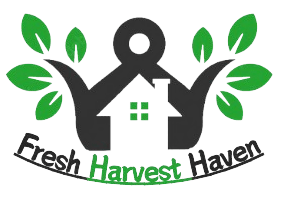
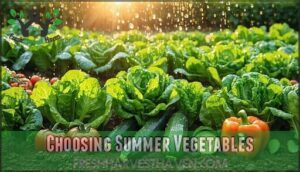
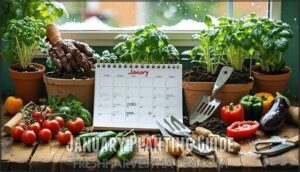
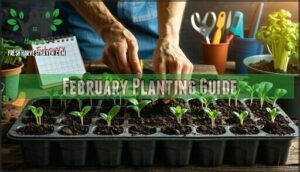
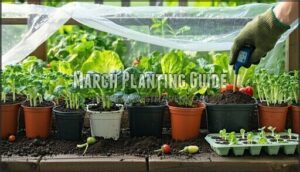
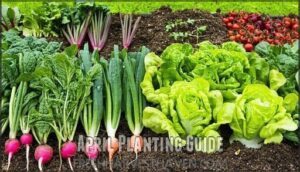
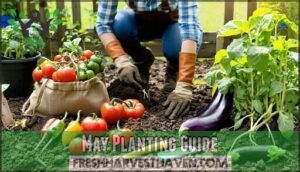
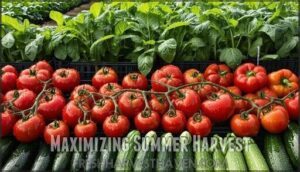



Yimosuk Julious
April 30, 2025 at 05:29 AM
Work well done